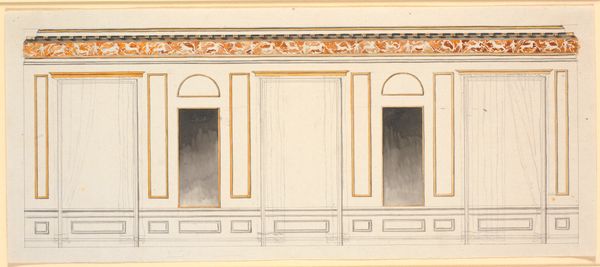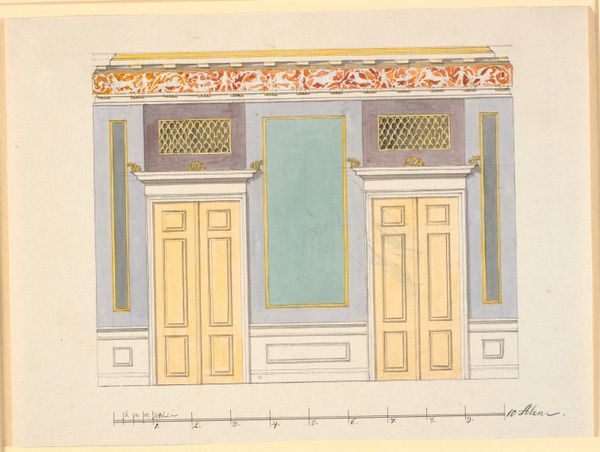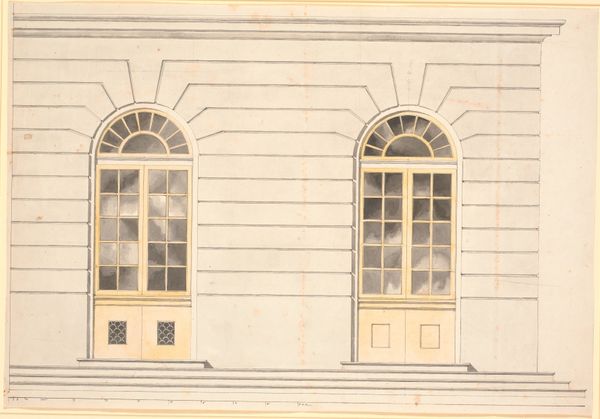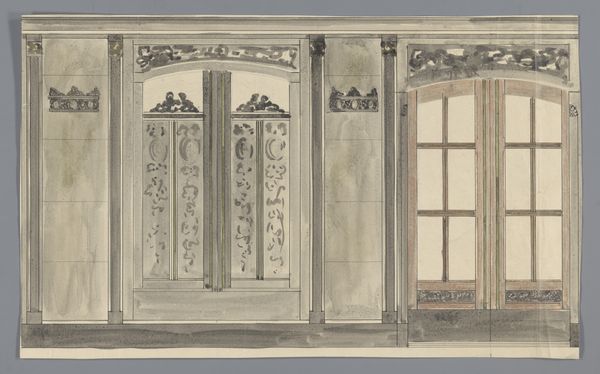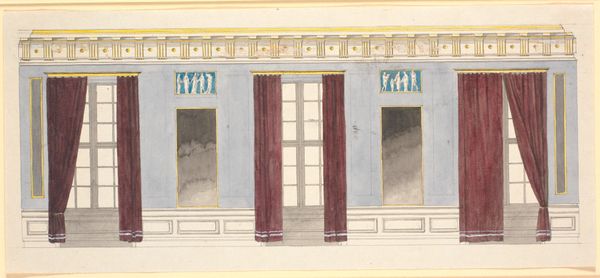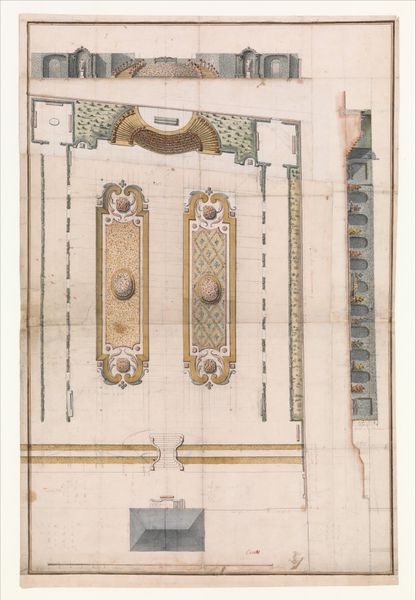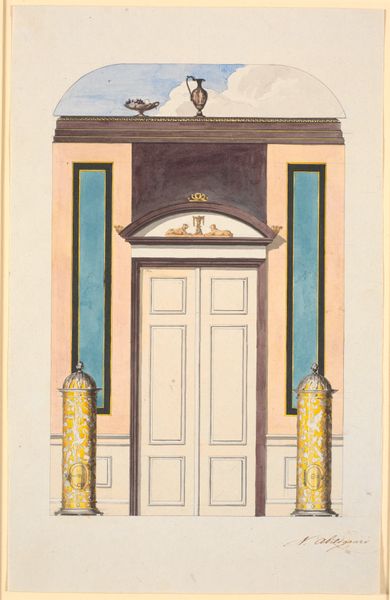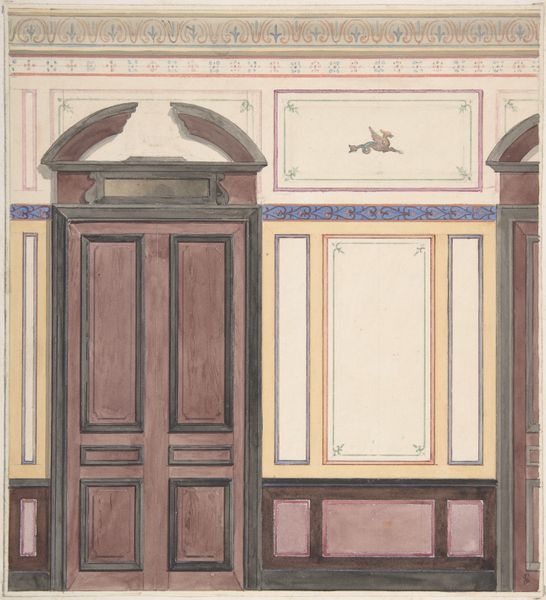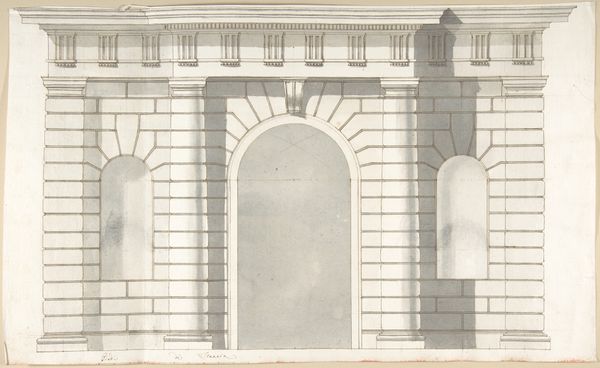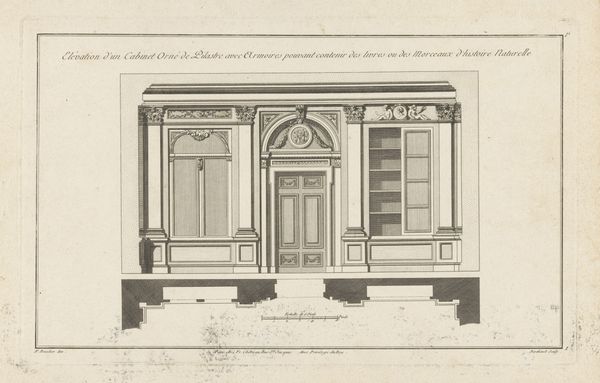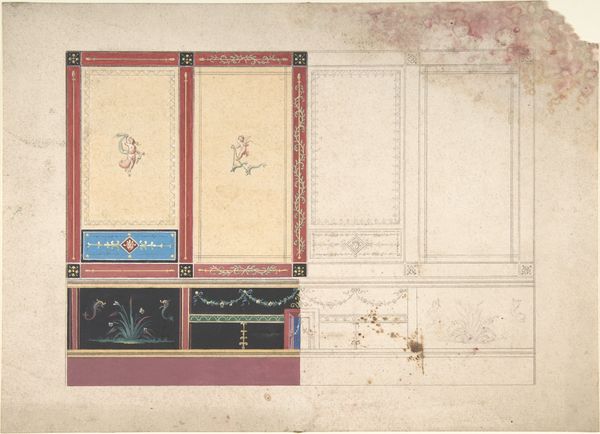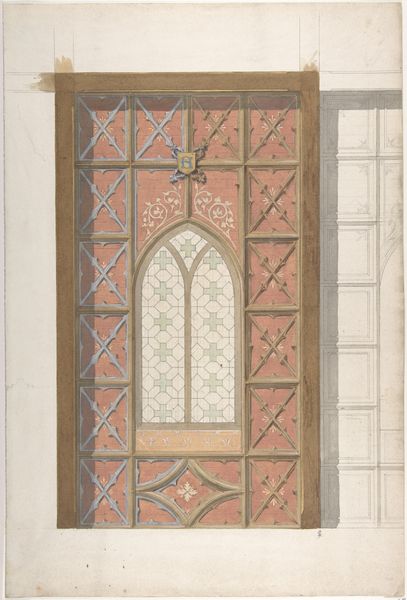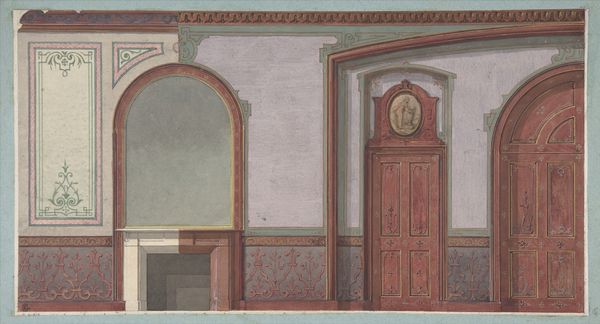
Udkast til en salsdekoration med lilla paneler, over døren i midten en muslingeskal og en vase 1743 - 1809
0:00
0:00
drawing, tempera
#
drawing
#
neoclacissism
#
tempera
Dimensions: 168 mm (height) x 447 mm (width) (bladmaal)
Editor: So this is "Udkast til en salsdekoration med lilla paneler, over d\u00f8ren i midten en muslingeskal og en vase," a tempera drawing by Nicolai Abildgaard, dating from 1743 to 1809. The muted colors and symmetry give it a formal, almost austere feel. What can you tell me about its historical significance? Curator: This piece is fascinating when we consider the rise of Neoclassicism. It’s a proposal, right? A drawing for a room decoration. But it shows us more than just aesthetic preferences. What kind of statement do you think a room decorated like this was making? Editor: Hmm, maybe something about order and reason? Neoclassicism rejected the frivolity of the Rococo style, didn’t it? Curator: Exactly! Think about the socio-political context. What was happening in Europe during Abildgaard’s lifetime? What do these architectural elements—the panels, the precise symmetry, the suggestion of ancient Roman motifs— evoke? Editor: Revolution, maybe? A return to supposed republican virtues? Is that too obvious? Curator: No, not at all. It highlights the aspiration of a new social order that favored measured rationality and civic virtue and sought visual language. Look at where it’s intended to be: a salon, a space for conversation and display. How did architecture communicate the ideals of an era? Editor: So, this design isn't just about making a pretty room. It's about constructing an image of a society—rational, ordered, perhaps even revolutionary. I hadn't considered the connection so explicitly. Curator: Precisely. Abildgaard's design is a subtle yet powerful assertion of values projected onto the very walls around us, suggesting the profound link between aesthetics and ideology. Editor: Thanks, that really highlights the public and political aspect to Neoclassical art beyond the simple aesthetic. I’ll remember to think about the "why" and not just the "what" when I look at art from this period.
Comments
No comments
Be the first to comment and join the conversation on the ultimate creative platform.
